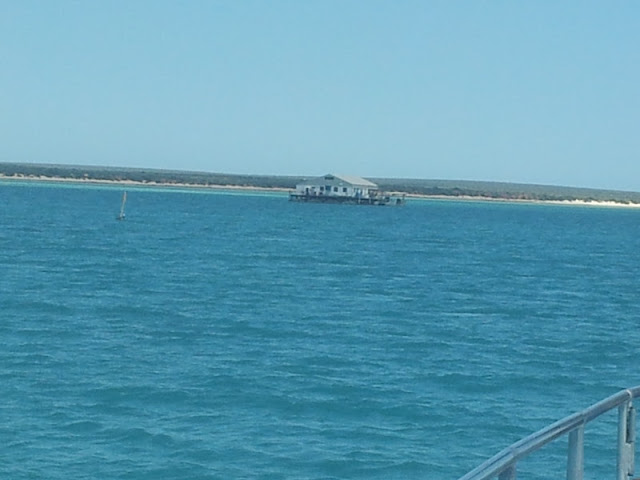Hi everyone, visited the aquarium today, just near Denham . There are only a few glass displays, the rest of the fish & sharks are in open pools. We enjoyed our visit there, the guides were fantastic, so knowable, but unfortunately I don't remember the names off all the fishes & sharks there. It is very hard to take photos through water, there is a lot of light reflection We then travelled south down the peninsula ( the way we came into Denham) & visited a few other scenic spots..
Lion fish
A crab (lobster?) shell that has just been shed, like a snake skin.
Stone fish- live on rocks & are very hard to spot. This one is covered in algae to look like a rock. They have very nasty spines and are very painful if you step on one (as in morphine for days painful).
Sea Snake- their bite can be deadly, but they very rarely bite. They are very nervous & swim away rather than face aggression. The guide told us even if they do bite, they initially give a "false" bite- no venom- so they don't waste energy expelling their venom .
A ray- I think it is called a shovel-nosed ray, and is not dangerous.
This is a turtle rescued from the beach. It has an infection in it's bowels, just under the shell, which means it cannot submerge & therefore find food. They are treating it with anti-biotics, & will return it to the wild when it is well & able to find it's own food.
Looking over one of the fish pools to Shark Bay
Fish pool- many different species of fish, all living in Shark Bay
Some pictures of the Shark Pool- Tiger Shark above
Fish fillet on hook being fed to the sharks
Shark feeding pool
Little injured turtle being cared for at the centre
A face only a mother could love!
Views down the Peninsula
Map of Shark Bay, Denham is on the left side of the middle peninsula near the top. Monkey Mia on the right opposite the WA coast. The long island on the top left is called Dirk Hartog, named after the Dutch trading ship which landed on 25/10/1616, 152 years before Captain Cook. He inscribed a pewter plate & nailed it to a post to record his landing. 81 years later his countryman William de Vlamingh visited the site & replaced his pewter plate with one of his own, & returned the original plate to Holland. It is now in a museum in Holland and a replica of the original is in Denham. The plate left by William was in turn found in 1801 & left by the captain of a French expedition . Later on ( 17 years) another officer returned there & took it to Paris. It was returned to Australia in 1947 & is in the WA Maritime Museum.


















































